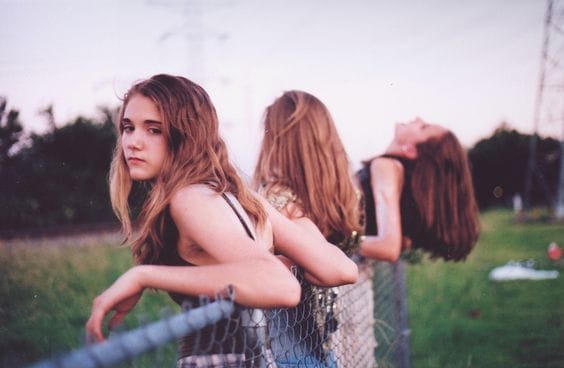The impact of social media on teen girls may be highly underestimated, according to author Nancy Jo Sales. Sales recently released a book, American Girls: Social Media and the Secret Lives of Teenagers, in which she interviewed dozens of teens about their social media and Internet use. The findings of those interviews sheds light on the pressures faced by this demographic, as well as the sexism and misogyny played out against these young women. When these new findings are coupled with statistics showing an increase in substance abuse among teens on social networks, concerns over social media use become even more alarming.
Social Media and Self-Worth
In her interviews with more than 200 girls, Sales discovered that many of these young women were very disturbed by the impact social media was having on their self-worth and their relationships. The angst of making a post and failing to get enough “likes,” the negative comments that seem to come so easily in the anonymity of social platforms and the anxiety over missing messages is just one more source of worry for girls that already have enough drama on their plates.
Teens are increasingly communicating without face-to-face contact, which opens the door for all types of communication problems. First, written messages can be easily misconstrued, resulting in conflicts that might not ever happen with a more personalized approach. Second, the ease in which other teens can make inappropriate or hurtful responses creates a much more hostile environment for some teens. With most adolescents using a variety of social media platforms in addition to texting to communicate with others, the potential for conflicts increases as well.
Social Media and Sex
The way in which girls are sexualized on social media is an alarming and widespread problem. Sales opens her book with an account about a 13-year-old girl that received an Instagram request for “noodz,” nude photos of herself, from a boy she did not know well. Other girls the same age told Sales they had been threatened with rumors and other types of humiliation by boys if they refused to send the requested photos.
Unfortunately, when girls comply with these requests, the trauma often multiplies. The photos can, and often are, shared with groups of people. This typically occurs without the girl’s consent and most of the time, the girl doesn’t even know about the situation until a friend alerts her to the fact her pictures are out in public view.
In some cases, Sales discovered groupings of these photos are posted on what have become known as “slut pages.” Sales compares them to an amateur pornography site, which they basically are. Often referred to in the media as “sexting rings,” Sales found these pages existed in nearly every school she visited during the research of her book.
The Cyberbullying Problem
Cyberbullying is another huge problem brought on by the prevalence of social media. According to studies conducted by the Cyberbullying Research Center, as many as one-fourth of teens surveyed said they had been a victim of cyberbullying. Around 16 percent of those surveyed admitted to being perpetrators in such attacks.
PEW Internet Research found that teens that witnessed cyberbullying on social media rarely saw anyone come to the defense of the victim. In fact, as many as 95 percent said they have seen others ignore the bullying behavior completely. Two-thirds said they saw others join the initial cyberbully, ganging up on the victim online.
Cyberbullying is seen as an easier way to torment a peer secretly. Bullies say they participate in the behavior for a variety of reasons, including to show off to friends, to be mean or for entertainment. A large percentage of those actively involved in cyberbullying were also involved in some form of sexting.
Social Media and Substance Abuse
Substance abuse is another concern associated with social media networks. A study by CASAColumbia (National Center on Addiction and Substance Abuse at Columbia University) found that teens that are on social media sites daily are:
- Five times more likely to use tobacco
- Three times more likely to use alcohol
- Twice as likely to use marijuana
The study also found that 40 percent of teens have seen pictures on social media of other teens drunk, passed out or high on drugs. Around three-quarters of those teens admitted seeing the images encouraged them to use drugs and alcohol as well. Those teens were also more likely to have friends that abuse street and prescription drugs, another risk factor for their own substance abuse.
Prevalence of Social Media among Teens
Social media has made its way into every culture and economic level of this country. Last year, PEW Research Center found that nearly one-fourth of teens go online “almost constantly,” fueled by the abundance of mobile devices like smartphones. As many as 92 percent said they were online daily.
The most frequently used social media platform for teens continues to be Facebook. However, teens are also logging onto Instagram, Snapchat, Twitter and Google+ in large proportions. Texting is another important method of communication among teens, with the average teen sending and receiving around 30 texts daily.
Prevalence of social media use is even more problematic in light of the fact that few parents know or understand exactly what their kids are doing on these platforms and they are unaware of the potential dangers lurking online. One teen told Sales, “Sexism has filtered into new arenas that adults don’t see or understand because they are not using social media the same way. They think, how can there be anything wrong here if it’s just Snapchat or Instagram – it’s just a game.”
Unfortunately, statistics and anecdotal reports from the teen users of social media are telling a very different story. Sales rescecomends that Silicon Valley spend more time finding ways to stop cyberbullying and the online exploitation of children. She also urged parents to get off their own phones and talk to their kids.
The adolescent residential rehab center Visions is aware of the problems associated with social media, because we see those issues with some of our own patients. If your teen is struggling with substance abuse as a result of social media trauma or other reasons, we can help. Contact our counseling center today at 866-889-3665.
Originally posted on March 14, 2016 @ 1:16 pm







